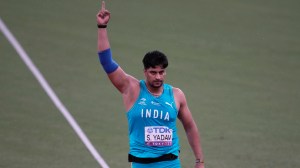No. 1 in world not good enough for us
A Nestle product, Perrier was withdrawn from the Indian markets following the notification of new standards by Prevention of Food Adulterati...

A Nestle product, Perrier was withdrawn from the Indian markets following the notification of new standards by Prevention of Food Adulteration (PFA) department in March last year. ‘‘Import of this product has been stopped and representations are being made to the health ministry,’’ said Himanshu Manglik, Nestle’s communications manager.
It failed to make it on two counts: Ph and calcium content. Its Ph content is less (5.89 as against the prescribed limit of 6.5) and it comes with a mild fizz, making it acidic. According to Indian standards, water with fizz is just not water.
The calcium content, on the other hand, is more because of its source that’s claimed to be some volcanic rocks in southern France. The authorities also have a problem with its packaging — it comes in green bottles when transparent plastic is the norm here.
The problem lies in the fact that the new Indian rules classify water into either ‘natural mineral water’ or ‘packaged drinking water’ unlike countries like the US where there are nine categories of water, including sparkling water, purified water, spring water and mineral water.
Ministry of Health officials argue that the rules have been framed keeping the ‘‘Indian conditions’’ in mind and joint director Deepak Gupta believes it doesn’t mean anything that it’s being sold all around the world. ‘‘In India, it is not unnatural for people to wash their face with it. With the high acidic content, the eyes will start burning,’’ said an official. Morever, they point out that if an average Indian is used to consuming two litres of water, he would be very uncomfortable if it was Perrier. Letters from ambassadors of Italy, France and Switzerland and many representations from Nestle have left the ministry unmoved. Now, Nestle has to make another representation within a fortnight.
The new rules were framed following a Parliament directive that came after a hue and cry over unscrupulous manufacturers passing off all kinds of water as mineral water. The Central Commission of Food Standards laid down the standards — in this case they are well within the broad WHO guidelines — and the Ministry of Health notified it in March last year.
The ministry officials say ‘‘this is fairly new and most countries do not have indigenous rules to monitor mineral water. Now we do and Perrier does not conform to what we classify as mineral water.’’ As per the standards, mineral water is natural water with minimum treatment as distinct from packaged water which is cleaned and chemically treated to meet the standards.
Only one foreign brand and three Indian brands have qualified here — Evian from France, Lifespring from Solan, Himalayan from Sermor in Himachal Pradesh, Catch from Kullu and Hello Paramount from Rudrapur. Nestle’s other mineral water, San Pellegrino, has also failed the test because of higher total dissolved solids (tds). The allowed figure is 700 whereas they are asking for 1520.
Photos



- 01
- 02
- 03
- 04
- 05




























